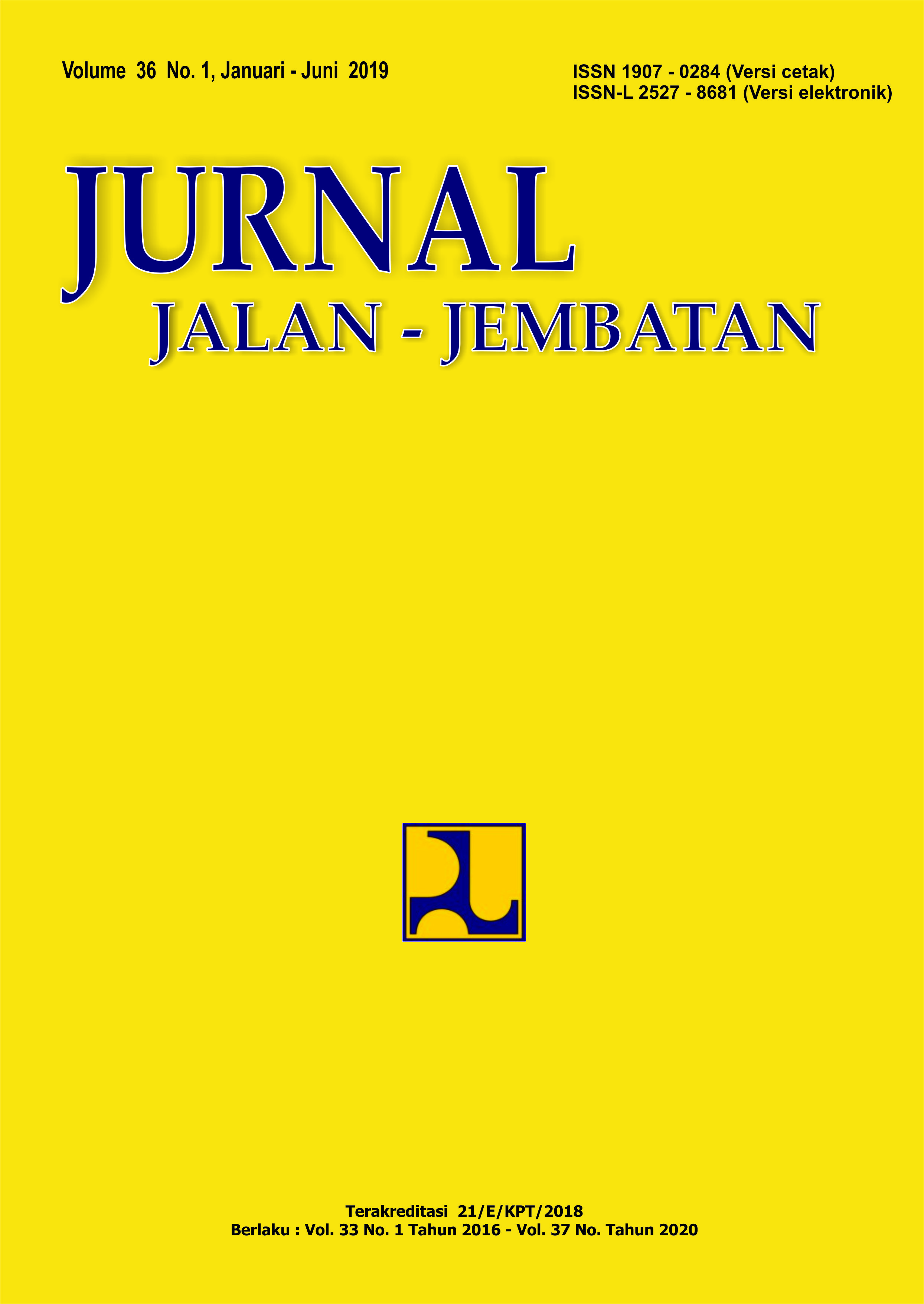(ANALYSIS OF THE RIVER FLOW SCOURING HAZARD COUNTERMEASURES ON BRIDGE PIER STRUCTURES)
Main Article Content
Abstract
Pier is part of the bridge structure which is vulnerable to the scouring hazard. The scour process on the pier can cause bridge failure and thus disturb its surrounding accessibility. This study aim to determine the potential hazard of river flow scour that occur in the Cipamingkis bridge in Bogor regency for several return periods. Cipamingkis bridge already been strenghthen by the replacement of two span of girder with one span of truss system with addition of pier dimension. Analysis to determine the potential of scouring was carried out using the HEC-RAS program. Modeling was made for two conditions, river flow condition before the bridge collapsed and after the bridge was repaired. Several parameters used in the analysis of scour potential consist of pier shape, water flow, water velocity, riverbed conditions, and riverbed material are take into account. The analysis results obtained from the HEC-RAS program are then compared with some empirical methods such as Lauren and Toch, Froehlich, and CSU. Scour depth based on the CSU method gives the greatest results compared to other methods. The results of empirical calculations using the CSU method give a scour depth of 5,64 m for a 100 year return period. This value can be used in the preliminary design of bridge pier as it gives the most conservative results. Nevertheless to obtain the more accurate results, this value need to be compared with the field measurement results.
Keywords: scour, pier, HEC-RAS, bridge, river flow
Article Details
Authors who publish in this journal agree to the following terms:
-
Authors retain copyright and grant the journal the right of first publication with the work simultaneously licensed under a Creative Commons Attribution License, which allows others to share the work with acknowledgment of the work's authorship and initial publication in this journal.
-
Authors may enter into additional contractual arrangements for the non-exclusive distribution of the journal's published version of the work (e.g., post it to an institutional repository or publish it in a book), with acknowledgment of its initial publication in this journal.
-
Authors are permitted and encouraged to post their work online (e.g., in institutional repositories or on their website) as it can lead to productive exchanges, as well as earlier and greater citation of the published work.
Each submitted manuscript must be accompanied by a "Manuscript Originality Statement" and a "Copyright Transfer Statement".

